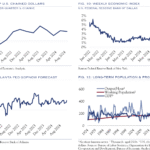🇺🇸 Clean Energy in the U.S. Today: Scale and Momentum
- Clean energy is booming: In 2024, renewables generated 945 TWh—surpassing coal for the first time—driven by record installations of solar (37 GW) and 13 GW of grid-scale battery storage in the U.S.
- The U.S. invested ~$338 billion in clean energy-related sectors (solar, EVs, grid infrastructure) in 2024, up from $303B in 2023
- Deployment shifted dramatically: fossil fuel generation investment dropped from 60% (2015) to under 40% (2024), while clean energy surged
Federal incentives like the Inflation Reduction Act (IRA) and the Infrastructure Investment and Jobs Act (IIJA) have been key. They delivered $422B+ in investments, created over 406,000 jobs across 48 states, and backed over 750 clean energy projects by early 2025
Manufacturing has especially escalated: clean-tech facility investments rose from $2.5B in Q3 2022 to $14B in Q1 2025, with 380 announced projects, nearly half already operational
2. Key Growth Areas & Technological Drivers
✅ Renewable Power (Solar, Wind, Storage)
- Solar and battery storage dominated investment, with solar accounting for 84% of new power capacity in 2024
- Utility-scale solar captured ~$52B in actual investment across 38 states, while storage climbed 51% year-over-year
- Onshore wind added ~7 GW in 2024; offshore wind accelerated with projects like Revolution Wind (targeting 2026 startup)
✅ Emerging Technologies: Hydrogen, Carbon Capture, SMRs
- Green hydrogen investment pledges exceed $50B, though actual deployment lags due to evolving tax-credit guidance
- Carbon capture and small modular nuclear reactors (SMRs) are gaining traction, with several forward PPAs announced—nuclear expected to dominate ~26 GW of new capacity by end-2024 .
✅ Grid & Transmission Modernization
- T&D infrastructure spending by utilities is ramping—transmission investments trending toward $121B by 2026
- IIJA provisions fund $11 B grid upgrades, $3 B in interregional transmission, plus $8 B in green hydrogen hubs and battery recycling
✅ AI & Grid Efficiency
- AI tools now enhance renewable forecasting, predictive maintenance (boosting uptime by ~30%), congestion management, and battery performance—extending operational lifespan by ~15%
3. Regulatory Overhang and Emerging Risks
⚠️ Policy Instability
- The “One Big Beautiful Bill”, enacted in mid‑2025, accelerates the phase‑out of solar, wind, EV and battery tax credits previously enabled by IRA, potentially stalling development by end-2027
- Strategic uncertainty surrounding safe-harbor rules and tax-credit eligibility also threatens project financing stability
⚠️ Project Cancellations
- In Q1 2025, at least $14 B of clean energy projects were canceled or delayed, including battery and hydrogen plants—highlighting investor caution amid policy flux
⚠️ Market Fragmentation & Supply Chains
- With IRA uncertainty, some firms (e.g. Freyr Battery, Bosch) downsized or canceled U.S. plans, shifting focus to Europe or Asia
- Grid bottlenecks remain: 205 GW of solar/wind projects are stuck in interconnection queues, with transformer shortages causing delays of up to six years and price hikes of 26%
⚠️ Geopolitical Shifts
- U.S. risks losing leadership in core clean sectors like hydrogen and carbon capture, especially as governments retract support and China accelerates investment abroad
4. How Investors Are Positioning in 2025
🔍 Investment Strategies
Core Renewables & Utilities
- Utility-scale solar firms, wind developers, and regulated utilities offer stable, long-duration cash flows. Best suited for investors seeking income with moderate growth potential.
Manufacturing & Clean Tech Growth
- Public companies building IRA-backed manufacturing plants (battery cells, PV modules, hydrogen equipment) remain attractive near-term targets. Example: Tesla, Enphase, First Solar, Bloom Energy, FuelCell Energy.
Transition & Infrastructure Funds
- Asset managers and private equity firms target grid modernization, hydrogen hubs, transmission corridors, and storage portfolios. These firms leverage IRA and IIJA tax equity financing systems
Thematic or Impact ETFs & Funds
- Clean energy ETFs, green bond funds, and carbon transition vehicles attract both retail and institutional capital—especially those focused on hydrogen, storage, and ESG-aligned portfolios.
Emerging Tech Ventures
- Private market interest spans high-risk/high-reward areas like fusion (Helion raised $425M), geothermal (Bedrock Energy raised $12M), and next-gen energy technologies
⚖️ Balancing Risk and Opportunity
| Objective | Strategy | Risk Consideration |
|---|---|---|
| Long-term income | Utility-scale renewables, regulated infrastructure | Regulatory shifts undercut project economics |
| Growth & scale | Manufacturing-linked public equities | Delays in policy may slow capacity build-out |
| Opportune innovation | VC/PE in fusion, hydrogen, carbon capture | High failure rate and long development timelines |
| Broad diversification | Clean energy ETFs or infrastructure funds | Tariff risk, policy changes, crowded capital pools |
5. Looking Ahead: Outlook for U.S. Clean Energy
🇺🇸 Will Private Investment Stick Around?
Despite federal setbacks, state-level mandates and corporate procurement demand remain strong. Many red states continue getting billions in clean energy investments—putting GOP senators in a bind balancing federal policy with local economic gains
🌍 Global Competition & Climate Leadership
While the U.S. steps back on subsidies, other nations (EU, China) continue aggressive decarbonization. U.S. clean energy leadership may shift unless private capital and international partnerships compensate for policy gaps .
🔁 Resilience Through Adaptation
The clean energy transition is increasingly seen as inevitable: innovation, corporate demand (e.g. data centers requiring clean PPAs), and declining costs help maintain momentum despite uncertainty .
6. Conclusion: Investment Verdict
Yes—U.S. clean energy remains a compelling investment sector in 2025, but strategy execution must account for:
- Policy volatility: IRA and IIJA benefits are phasing out; investors need visibility into subsidy cliffs and enforcement changes.
- Execution risks: Project delays, supply chain constraints, and interconnection bottlenecks present real hurdles.
- Diversification importance: Mix stable utilities and manufacturers with high-growth startups.
- Technological edge matters: AI-driven grid efficiency, hydrogen, storage innovation offer differentiated upside.


